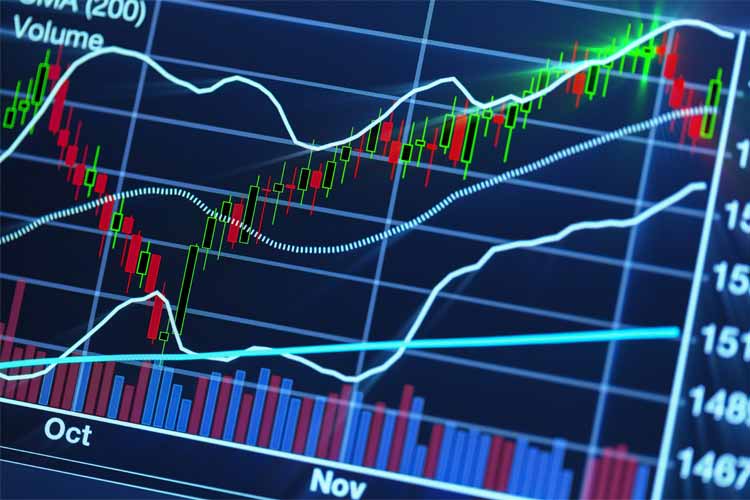
RSX, UUP, and GLD could continue to make big moves after Trump is sworn in
The stock market has been on fire since the Nov. 8 U.S. presidential election, due to what many have dubbed the "Trump rally." While fewer than 50 trading days have passed between then and now, the major market benchmarks have all explored record-high territory --
and could continue to do so, if history is any guide -- with the Dow coming within a whisper of the psychological 20,000 mark. As such, all eyes will be on D.C. on Friday, when Donald Trump will drop the "-elect" from his newly won title, and be inaugurated as the 45th president of the U.S. As such, market watchers will likely be keeping an eye on the
VanEck Vectors Russia ETF (RSX), the
PowerShares DB U.S. Dollar Bullish ETF (UUP), and the
SPDR Gold Trust ETF (GLD), which all have ties to the president-elect.
VanEck Vectors Russia ETF (RSX)
The RSX was one of the top performing foreign exchange-traded fund's (ETF) in 2016, adding more than 45% -- while
the VanEck Vectors Russia Small-Cap ETF (RSJX) turned in the best performance, doubling in value. With Trump taking a friendlier tone toward Russia than his Democratic counterpart Hillary Clinton, RSX surged nearly 16% from Nov. 9 to Dec. 31 -- and hit a two-year high of $21.99 along the way -- to settle atop its 36-month moving average for two straight months, and close out December north of $21, home to its 2015 highs, March/October 2014 lows, and the late-2008 post-bear gap highs. Though the shares have extended this upside into the new year, they're currently flirting with a 2.4% week-to-date loss to trade at $21.18 -- and test their 20-day moving average, which has ushered RSX higher since the U.S. election.
Short-term traders are decidedly put-heavy toward RSX, per the ETF's top-heavy Schaeffer's put/call open interest ratio (SOIR) of 2.73 -- in the 97th annual percentile. This is likely due to the massive amount of open interest at the deep out-of-the-money January 2017 15- and 17-strike puts, where more than 67,000 contracts collectively reside. Longer term, the May 21 put has seen the largest rise in open interest in the past 10 trading days on the VanEck Vectors Russia ETF, with 8,331 new contracts added.

PowerShares DB U.S. Dollar Bullish ETF (UUP)
After matching a seven-year high of $26.83 on Jan. 3, UUP has been on the decline -- down 3% -- most notably due to yesterday's sharp pullback following
Trump's comments that the U.S. dollar was "too strong." Nevertheless, the ETF found a foothold in the $26 region, and closed Wednesday at $26.16, a former area of resistance that is home to a 50% Fibonacci retracement of its early November-to-January rally and its 2015 close.

Traders, it seems, have been bracing for more Trump-related turbulence for the dollar. At the International Securities Exchange (ISE), Chicago Board Options Exchange (CBOE), and NASDAQ OMX PHLX (PHLX), UUP's 10-day put/call volume ratio of 0.72 ranks in the 75th annual percentile, meaning puts have been bought to open over calls at a faster-than-usual clip in recent weeks. Plus, put open interest across all options series is docked just 5 percentage points from a 52-week peak, with 215,344 contracts outstanding.
In the front-month series -- which expires at the close on Inauguration Day -- peak put open interest of 22,390 contracts resides at the January 2017 26.50-strike put. While
Trade-Alert indicates a significant portion of these puts was bought to open on Tuesday, Jan. 10 -- when the PowerShares DB U.S. Dollar Bullish ETF was trading near $26.37 -- it also suggests they may be tied to UUP shares.
SPDR Gold Trust ETF (GLD)
GLD has been moving higher since putting in a post-Fed bottom at $107 in mid-December. In fact, the shares have surged 8% since hitting this Dec. 15 low, including yesterday's 1.4% pop as the U.S. dollar staged a Trump-induced retreat. What's more, Tuesday's daily win was GLD's 13th out of 15 sessions, the first triumph of its kind since 2011. Plus, the ETF is now back above the $111-$112 area -- which marks a 61.8% Fibonacci retracement of GLD's December-to-July rally, and supported pullbacks in late 2014 and early 2015 -- as well as the $115 region, home to a 50% retracement of the early 2016 surge, which served as a floor in 2013 and early 2014. On Wednesday, GLD closed at $114.87.

Despite GLD's encouraging bounce, call traders have been tapping the proverbial brakes on the ETF. In fact, since topping out at a 52-week peak of 3.7 million contracts outstanding on Nov. 18, call open interest has declined 25% to 2.8 million calls, in the tepid 35th annual percentile.
Nevertheless, those purchasing the ETF's near-term options are scoring a relatively good deal. While SPDR Gold Trust ETF's 30-day at-the-money implied volatility of 13.6% ranks lower than 93% of all comparable readings taken in the past year, its Schaeffer's Volatility Index (SVI) of 14% ranks in the 19th percentile of its annual range. Summing it all up, low volatility expectations are currently priced into GLD's short-term options.
Schaeffer's Expiration Week Countdown subscribers just made 97.5% GAINS on SPDR Gold Trust (GLD) puts! Sign up now for a trial subscription.